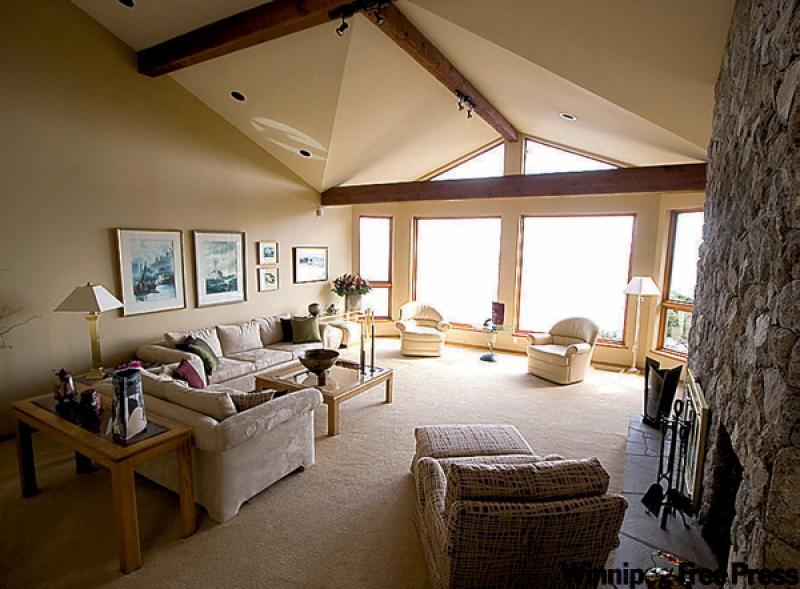Tim Schauerte considers the greatest compliment he can get when he finishes a job is when his clients tell him it looked like he was never there.
Schauerte's skill is in the area of finishing carpentry, also known as millwork.
His work begins only after the framing carpenters and drywallers have completed their phase in the construction of a new house. A finishing carpenter's job is to install the trim, such as the baseboards, mantels, mouldings, doors, crown mouldings, window mouldings and cabinets within a house.
"A house is just a house; it's the trim that finishes it," says Schauerte, owner of James' Joinery. "Cabinets are essentially plain white boxes. It's the trim and finishing that make the difference."
As well as adding decorative details, trim can be used to hide a multitude of sins.
"We have a saying in our trade: 'If you can't make it go away, you accentuate it.' "
Schauerte says a skilled finishing carpenter can use mouldings and trim to compensate for uneven floors, ceilings or out-of-square rooms. But most of the time, people use trim to give a room a more custom look.
"The use of trim is usually the most overlooked item in a house," says Aaron Rowoth, general manager of The Finishing Store. "It's something that can change an interior without a lot of cost."
He says the main difference between a spec home (one built to be sold) and a custom home is the use of intricate mouldings.
For example, instead of installing standard three-and-a-half-inch-tall baseboards, which are usually found in a spec home, a custom home might feature boards as tall as eight inches if the size of the rooms make that appropriate.
But homeowners should be aware of proportion before they buy their mouldings. "Typically, the baseboard should be as tall, or taller, than a casing is wide," Rowoth says.
Schauerte says the use of mouldings can enhance a room, but inappropriate application can grate on one's sensibilities. Although built-up mouldings are appropriate in a classic MacLure mansion, their use in a contemporary setting can seem heavy and overbearing. A lighter application would be more appropriate if an owner wants to keep rooms light and clean.
Though the use of more expensive mouldings will not necessarily increase the value of a home, it might help it stand out from the competition and sell faster than one with plainer trim.
Rowoth calculates that a house generally requires about 1,000 linear feet of baseboard mouldings and about 1,200 linear feet of casing for windows. Upgrading from the basic to a more deluxe trim would only increase the cost by $350 to $400. The cost to install either mouldings would be identical.
"The labour costs the same to put on cheap stuff," says Schauerte, who has 20 years' experience in woodworking. He advises homeowners not to skimp when it comes to taking the time to install materials. "Do it right, do it once.
You're wasting materials and labour if you need to have somebody repair mistakes."
Although traditionally milled from wood, these days almost every home improvement store carries pre-primed ultralight MDF (medium-density fibreboard) mouldings in various styles. They are popular because of their low cost in comparison to real wood. But if durability is desired, Rowoth recommends buyers use real wood.
"Using natural wood, such as fir, may cost up to three times more than ultralight, but it is much more durable. It is less susceptible to chipping and won't need to be replaced as often."
Heritage homes would typically have more custom millwork, with mouldings that have more detail, called profiles.
Many old profiles can still be reproduced by companies such as The Finishing Store in the original wood.
To Stephanie Wilmott, attention to the millwork is an essential finishing touch that creates individuality and amplifies the level of finish in her house.
Although cost is an issue, she always tries to find practical alternatives that allow her to dress up her home.
"To me, the millwork is like having an eye-catching handbag and pair of shoes," says Wilmott, a businesswoman who recently moved into a new home with her husband and three active boys. "It complements the dress and makes a difference."
-- Canwest News Service
The right mouldings
Selecting the proper mouldings for a room is a personal choice. There are lots of sizes and shapes (called profiles). Mouldings can also be custom-cut to match existing, out-of-production profiles in older homes.
Profile: The thicker the moulding, the more profile it can have. Mouldings generally range in thickness from 3/8" to 3/4" (.95 to 1.9 cm). Wood mouldings have crisper lines than MDF.
Wood type: Finger-joint pine is the most common choice for painting. Oak, pine and maple are used when staining is desired.
Baseboards: As a general rule, a room with a standard eight-foot (2.4-metre) ceiling would require four- to five-inch baseboards. Traditionally, shoe mouldings are used to hide cracks between baseboard and floor.
Casing: Casings are used around doors and windows. They are the most noticeable of mouldings. A room with a standard 2.4-metre ceiling would, in most cases, require two-and-a-half-inch casings.
Crowns: To enhance crown mouldings, some homeowners add casing trim either above or below the crown to make it look bigger without encroaching into a room.
Usually, a room with a standard 2.4-metre ceiling would require four-and-a-half-inch (11.4-cm) crowns.
Decorative mouldings: Mullions, chair rails, rosettes, base blocks and bullnose are some of the decorative mouldings used to add architectural detail in any room.




